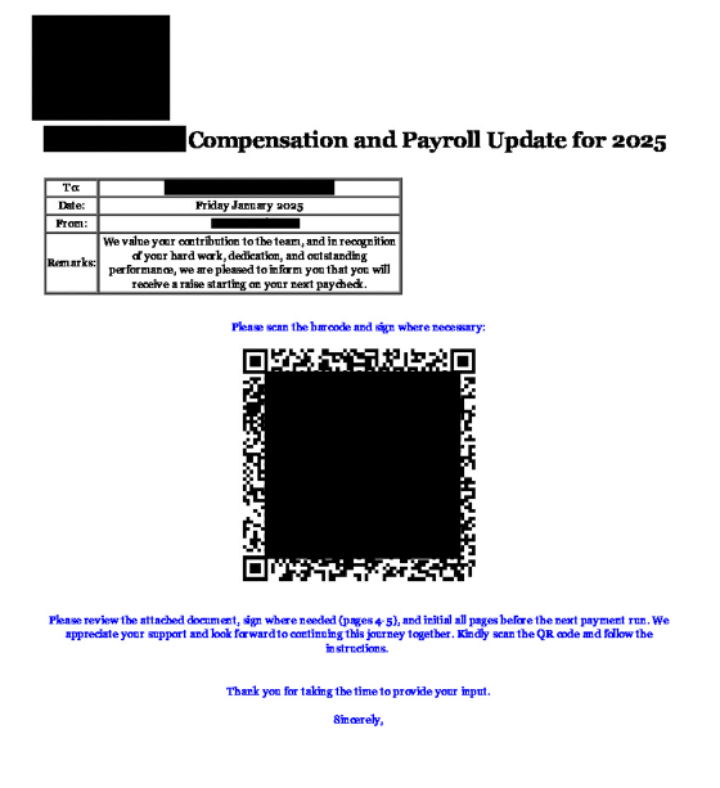As tax season approaches and annual performance reviews conclude, cybercriminals are capitalizing on the perfect opportunity to exploit employees.
This week, we've seen a sharp uptick in phishing campaigns targeting individuals with fake 401(k) updates and payroll adjustment notifications. These scams aim to harvest sensitive data, such as login credentials and personal information, under the guise of legitimate corporate communications.
This activity seems to build on a trend we observed in December, where threat actors used similar tactics to distribute fake new employee handbooks, as detailed in our blog post: https://www.cyderes.com/blog/global-phishing-campaign-targeting-new-employee-handbooks.
Common Themes in Recent Phishing Campaigns
1) Subjects
- “W2 and 401(k) Payroll Adjustments: Immediate Action Required”
- “Health Insurance, Payroll, and Employee Bonuses in 2025”
- “Overview of Employee Bonuses, Payroll, and Health Insurance for 2025”
- accounting <sybil@mtwpastoral[.]com>
- kmeegan@flushingtownhall[.]org
- “Docs HR*Records.Files//172.150.112.198-2861744126-MJLPPQUNVIFLNYPLFIYW" <sherry.meyers@all-provalve[.]com>
- eva.lachmannova@sl-legal[.]cz
- HR DESK <kmeegan@flushingtownhall[.]org>
- https://brumkitchenstore.es/northvalleyagservices/...
- https://www.magneticosrmn.com/m/...
- https://www.google.com/url?q=...
- Fake Adobe Sign requests for payroll reviews.
- DocuSign-like interfaces for employee benefit updates.
- HR communications mimicking the company.



Familiarity: Cybercriminals mimic trusted tools like Adobe Sign and DocuSign to exploit employee trust.
Urgency: The emails use phrases like "Immediate Action Required" or "Pending Signature" to pressure users into acting without second-guessing.
Avoid Scanning Unknown QR Codes: QR codes can redirect you to malicious sites. Only scan those from trusted sources.
Use Multi-Factor Authentication (MFA): Even if credentials are compromised, MFA adds an extra layer of protection.
Report Suspicious Emails: If you receive an email like the ones mentioned, report it to your IT or security team immediately.
Ready to put these insights into practice and improve your ongoing security posture?
For more cybersecurity tips, follow Cyderes on LinkedIn and X.



